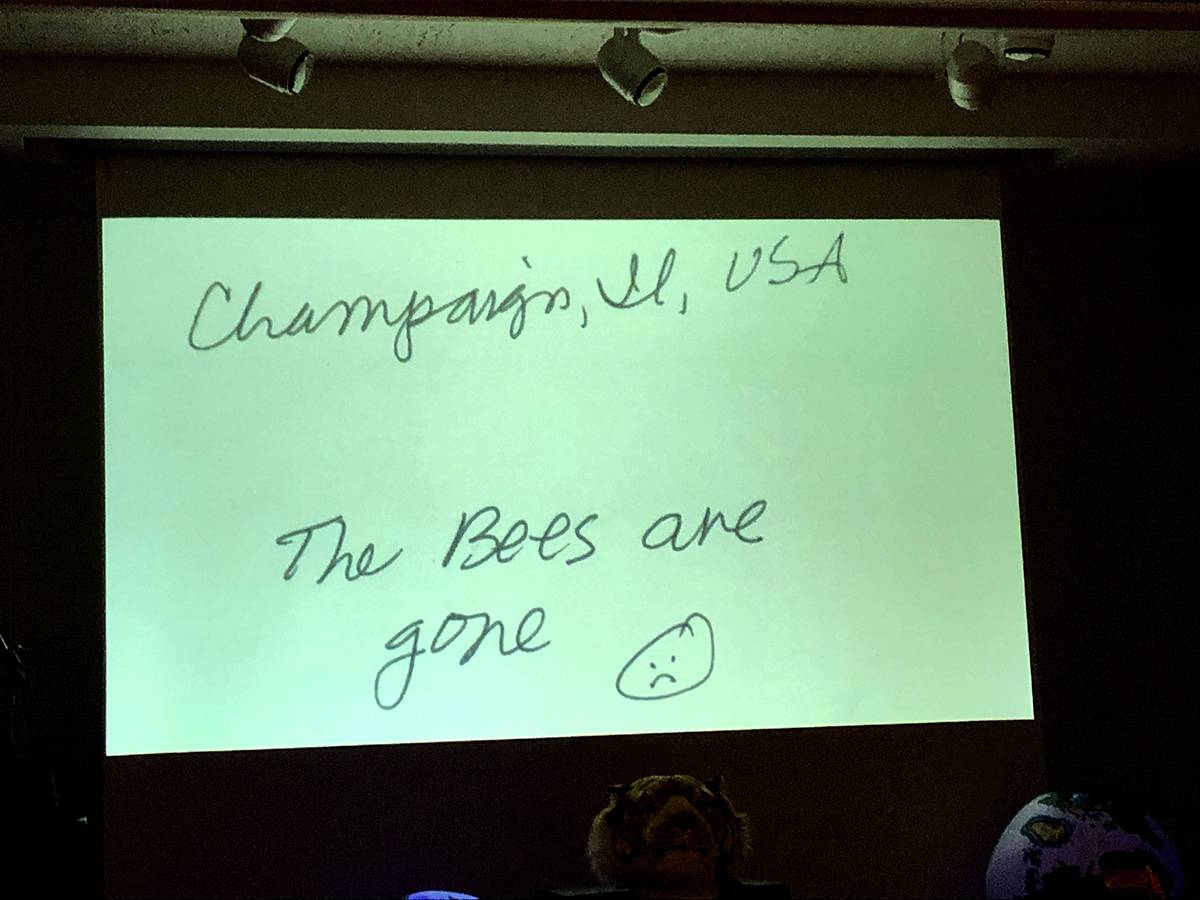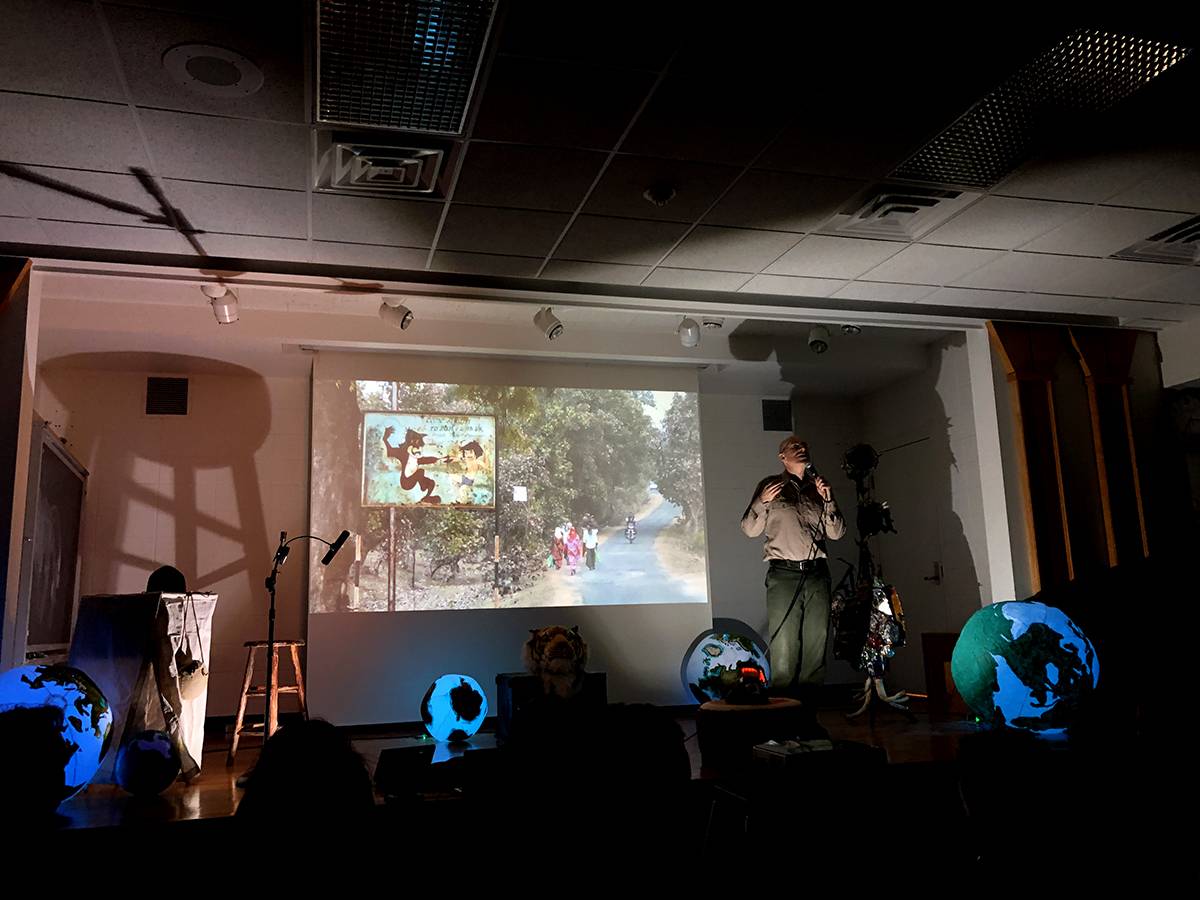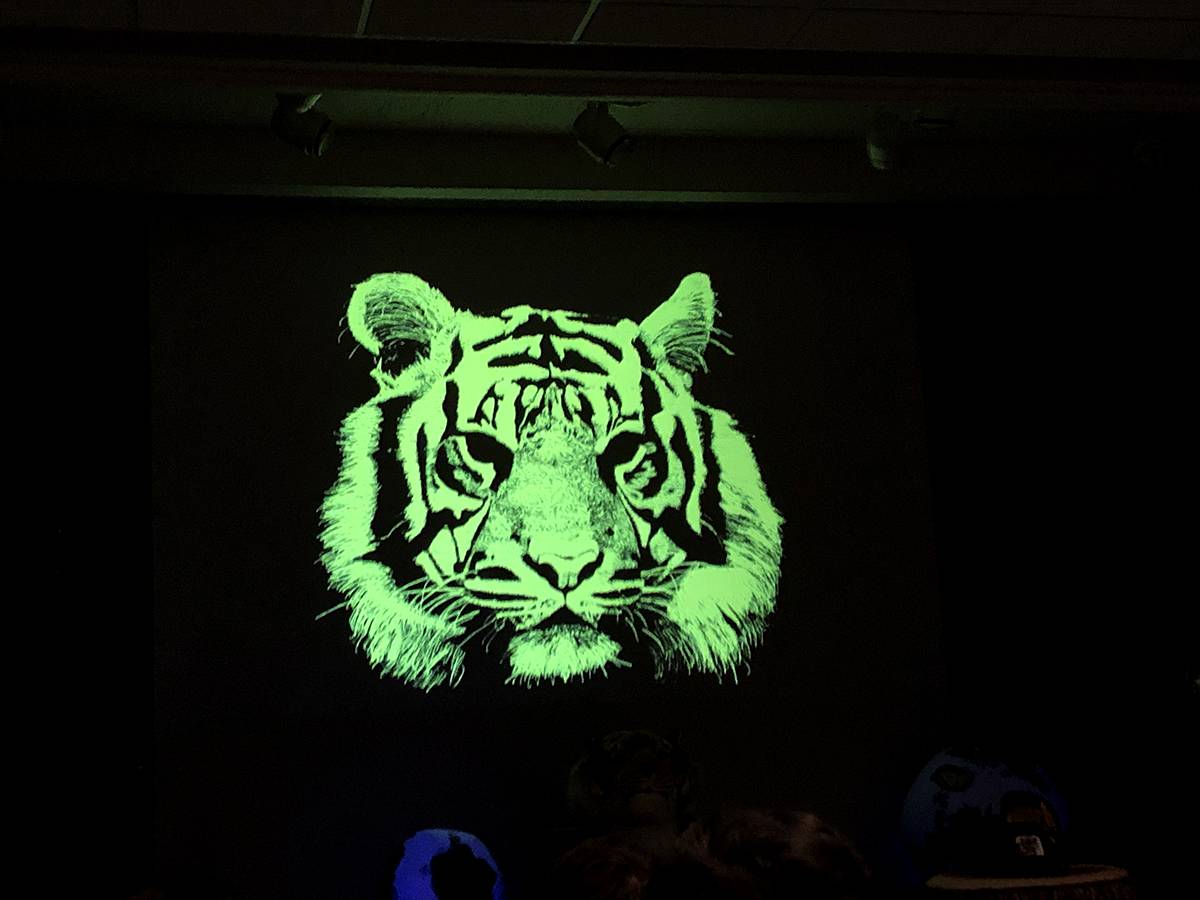Last Thursday, November 7th, loud humming filled the space of the Krannert Art Museum lower level as a group of eager individuals performed a tiger summoning séance under Deke Weaver’s command. This was my first experience with TIGER, the 5th performance of Weaver’s Unreliable Bestiary. This lifelong project is a compilation of performances for each letter of the alphabet, represented by an endangered animal or habitat. This specific performance was the culmination of the Mississippi River tour and a part of the Faculty Art exhibition at Krannert Art Museum.
TIGER was a visual journey that led audience members through a series of moments that highlighted the importance of tigers and the way in which their environments are becoming uninhabitable. Loaded with information, the slides at the beginning of the show caught my attention. They were statements, flashing desperately in front of the eyes of the viewers to warn them of drastic climate change occurring in various parts of the world. Several slides described environmental changes occurring in Champaign and Urbana.

Weaver’s seamless transition between three characters was mesmerizing. He played an American ranger, a guide at India’s Pench National Park, and himself. Using minimal costumes and props Weaver successfully transported the audience to India by using multimedia visuals and striking monologue. I have never taken the time to reflect on the value of tigers and their cultural significance in certain countries. After an hour and a half, I can relay a wide substance of information to anyone about this creature. Were you aware that the whiskers are a tactile third eye and are rooted in gigantic clusters of nerves within the animal’s face? Did you know that tigers can hear noise under 20 Hz? Are you conscious of the fact that aqua tigers reside in the Sundarbans in India? I was not either.
Weaver is a storyteller. His words and the way he delivers them inspire me. I was immediately transfixed and eager to learn more. Weaver began telling us of his trip to India and Pench National Park. This habitat is famous for tigers and people from around the world stay for days trying to catch a glimpse of them. However, they are very hard to spot. Weaver’s closest encounter with the tigers was seeing paw prints in the sandy road. To ease his disappointment the guide told him the following story. One jeep stalled in the forest and would not start back up. This lasted for a few minutes and in that time two tigers appeared. The approached the car, full of panicking tourists, and strolled around the vehicle. A video on screen shows the tigers nuzzling against the Jeep as a shaking camera pans around the scene. Eventually the tigers sauntered away. The guide tells him that the people cried of happiness, thanking a higher power that let them live. Tigers are wild animals. They are meant to be feared.
This brings me to Avni, a tiger that escaped Shivaji Park and killed thirteen people. This is what any wild animal would do. Flee captivity and attack prey. Unfortunately, the government decided this was a safety threat and organized a team to bring down the tiger. Across India protesters tried to stop the government from killing Avni but to no avail. Humans defaced nature yet again.

Another aspect of tigers and their symbolic relevance that Weaver emphasized is rooted in advertising within the United States. Kellogg’s icon, Tony the Tiger, has been stealing audiences’ hearts since 1952. His tagline “they’re grrreat” has been repeated on screen and off screen to this day. From a symbol to a humanized animation, Tony has taken an Italian-American nationality and represents excitement and enthusiasm. Why is this relevant? To understand this, we must delve a little deeper into aesthetics and marketing. Tigers are a very popular animal due to their physical characteristics, which are appealing to humans. They have forward facing eyes, fur that covers their entire body, a beautiful pattern on their coat, and are extremely muscular. These are all facts Weaver taught us. He wanted us to be aware of how the beauty of the tiger is taken and used to sell products in our capitalistic society.
TIGER was a social commentary. It struck me immediately that as an individual inhabiting this planet I am not considerate and conscious enough of the creatures I share my surroundings with. Growing up in the suburbs of Chicago and currently residing in Champaign, I have not been in close contact with wild animals, such as many people occupying communities in India. However, I respect the smaller wildlife I come in daily contact with, such as rabbits, squirrels, and various birds. I have grown more concerned about the way I interact with my environment, from the products I purchase to the way I dispose of them.
Weaver’s performance really resonated with me as a viewer. I believe it was so successful because it was a conversation. Weaver addressed us as his equals in our mutual mission to be activists in our everyday lives. We all must fight for the Tiger so it does not become extinct.
TIGER: An Unreliable Bestiary
Krannert Art Museum
500 E Peabody
Champaign
Photos by Apolonia Wielgus








